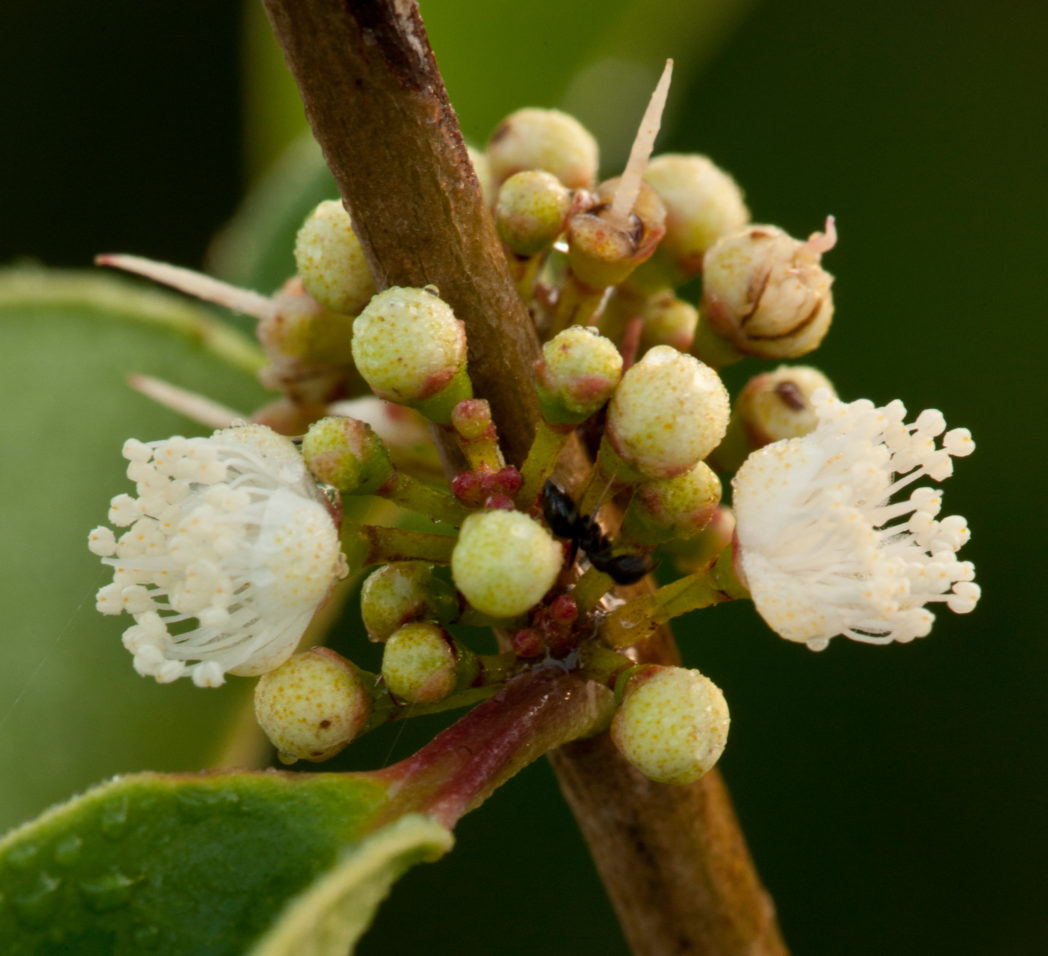White stopper
Pictured above: White stopper (Eugenia axillaris) by Keith Bradley. Click on terms for botanical definitions. View post as a PDF.
White stopper (Eugenia axillaris) is an evergreen shrub or small tree found in coastal hammocks, strands and shell mounds in Florida’s central and southern peninsula. Its fragrant flowers bloom year-round, with peak blooming in spring and summer, attracting many types of pollinators. Fruits generally form in fall, but may persist several months. They are eaten by birds and wildlife. Humans can eat them, too — the flesh is quite sweet when ripe, but eating the bitter seeds is not recommended.
White stopper’s flowers are 4-petaled with many obvious stamens that give them a frilly appearance. They are born in axillary clusters. Leaves are elliptic to ovate, dark green on top and pale underneath with entire margins and reddish petioles. Young leaves may be pinkish or red. Mature leaves may be studded with black dots. Leaf arrangement is opposite. Trunk is smooth with grayish bark. Fruits are round, medium-sized (about ½–inch in diameter) fleshy berries. Immature fruits are green; mature fruit color varies from red to purplish-black.
The common name “stopper” alludes to the plant’s historical use as a treatment for diarrhea.
Family: Myrtaceae (Myrtle or eucalyptus family)
Native range: Central and southern peninsula into the Keys
To see where natural populations of White stopper have been vouchered, visit florida.plantatlas.usf.edu.
Hardiness: Zones 9A–11
Lifespan: Perennial
Soil: Moist, well-drained calcareous, loamy or sandy soils
Exposure: Full sun to minimal shade
Growth habit: 15’+ tall
Propagation: Seed (sow when berries are ripe)
Garden tips: White stopper is an attractive addition to a variety of landscapes. Its copious blooms are striking against its dark green leaves. The plant’s dense foliage and ability to be pruned into any desired shape makes it a good option for a hedge or buffer. Individual specimens are typically symmetrical and work well in formal settings. Once established, White stopper generally requires little to no maintenance.
White stopper plants are occasionally available from nurseries that specialize in Florida native plants. Visit www.PlantRealFlorida.org to find a nursery in your area.
For more information on other Eugenia species, see:

